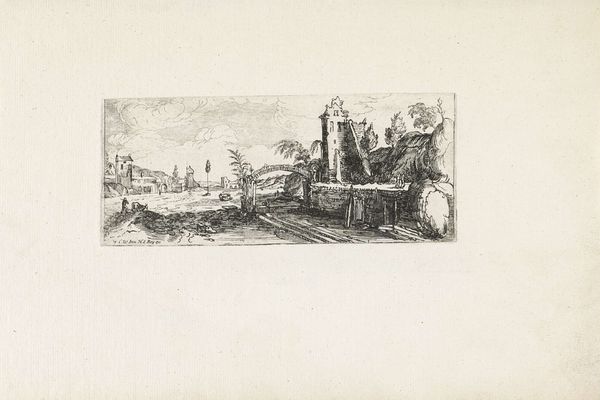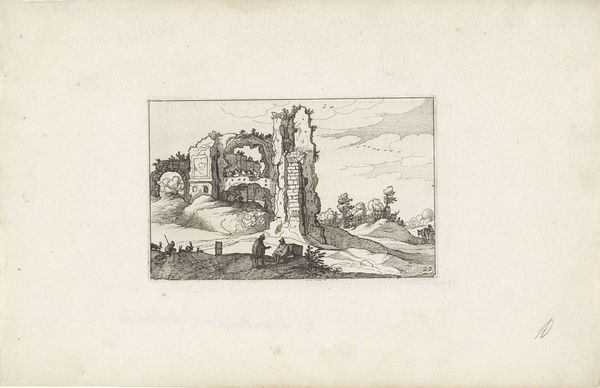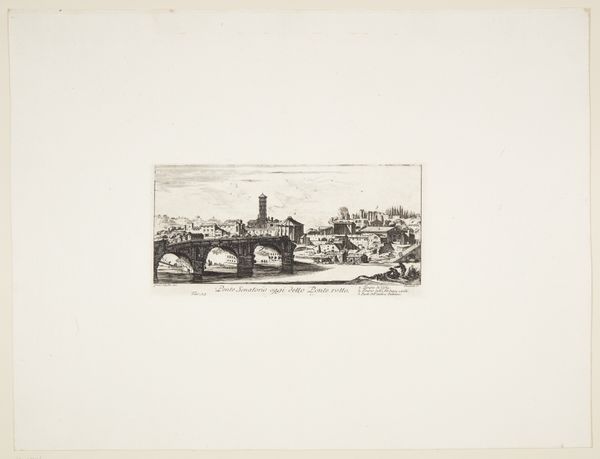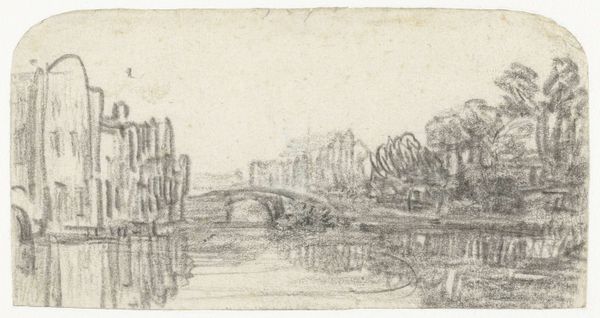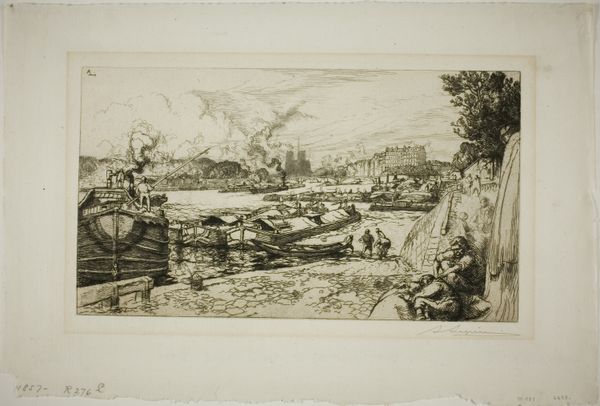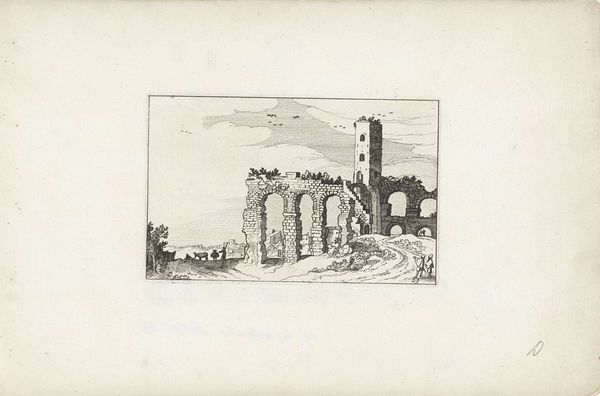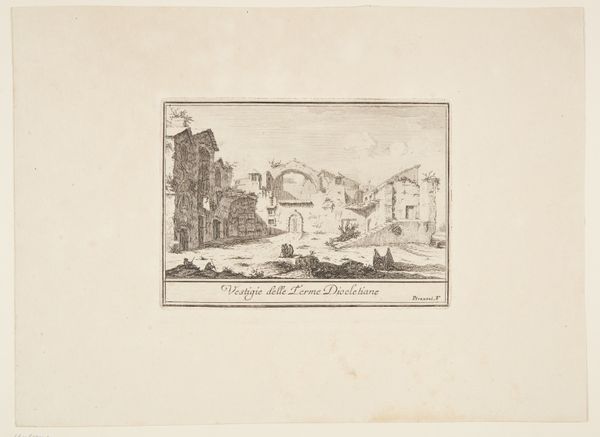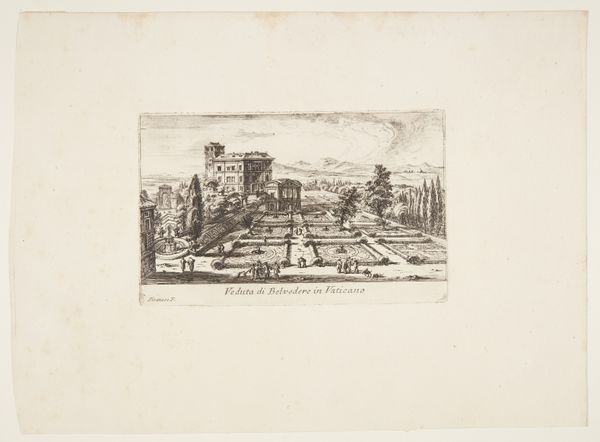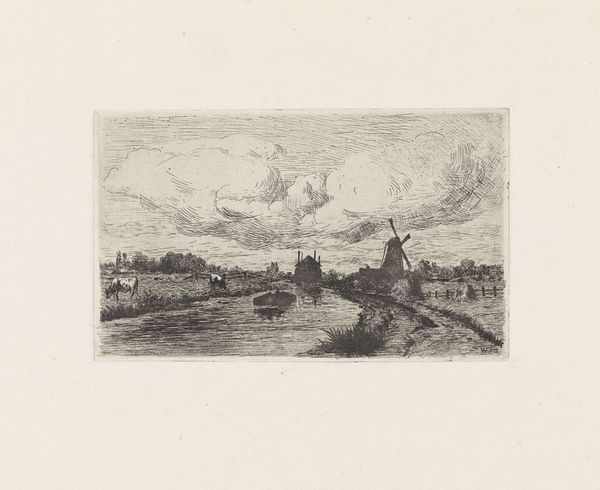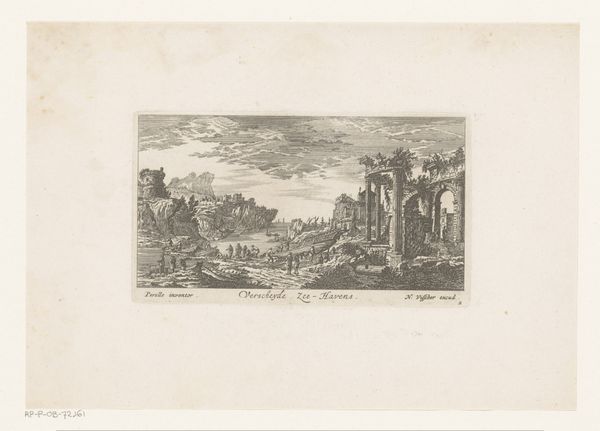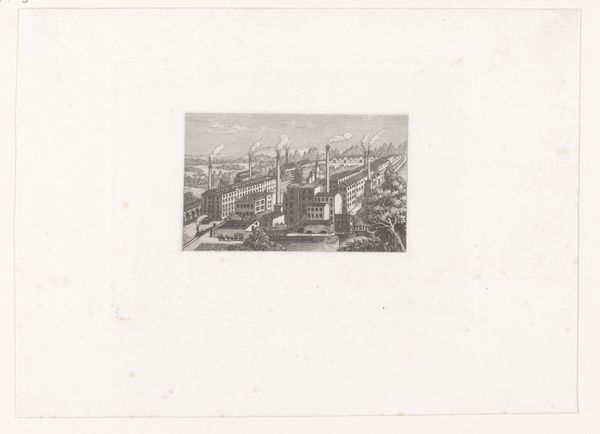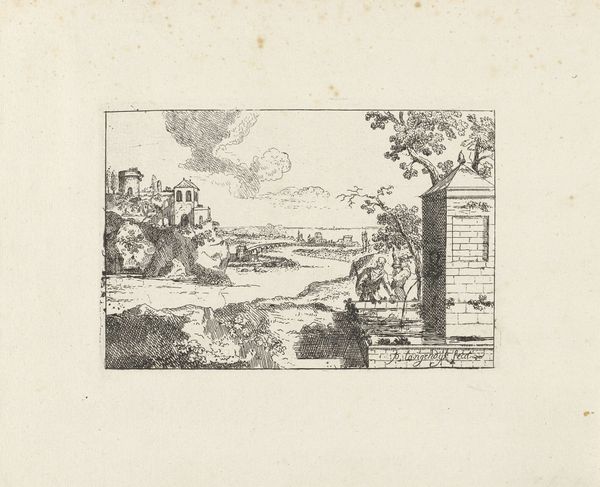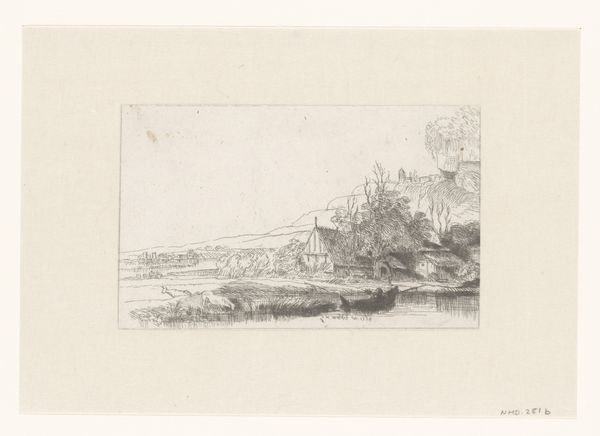
print, engraving
#
dutch-golden-age
# print
#
landscape
#
line
#
cityscape
#
engraving
Dimensions: height 100 mm, width 157 mm
Copyright: Rijks Museum: Open Domain
Curator: Let's take a look at "Stad met een brug over een rivier" – that translates to "City with a bridge over a river"—an engraving by Claes Jansz. Visscher from 1618. It's part of the Rijksmuseum's collection. Editor: The scene almost seems dreamlike. There’s a fragility in those thin lines. And, even though it’s just a cityscape, there's an oddly human quality about it, a sense of bustling life distilled to its essence. Curator: Visscher was a prolific printmaker, and this piece showcases his skill with line engraving. Look how he uses simple lines to create depth and texture, distinguishing building materials and the flow of the river. These kinds of prints played a huge role in disseminating images and ideas across Europe. Editor: Right. Prints were essentially the mass media of their time. How do you see this work reflecting or shaping perceptions of urban spaces in the Dutch Golden Age? Were these idealized portrayals or attempts to document reality? Curator: I think it's both. There’s a clear desire to depict a thriving city, reinforcing Dutch prosperity. But we must remember that artists such as Visscher also worked under specific patrons. He was selling these prints in the art market. They served as records but also as aspirational views. Editor: So, the politics of the image comes into play here, shaping the narrative of progress and success. I keep noticing that small figures of people are deliberately put on the bridge – their presence gives it scale. Curator: Exactly. Visscher wanted the city to appeal to his urban, middle-class clients, evoking a sense of shared identity and pride. Editor: The scene seems to whisper stories of trade, travel, and a collective ambition of that burgeoning era. It all strikes me as being designed to provoke a sense of excitement about belonging. It makes me want to understand the position of those not afforded access or visibility, though, too. Curator: A valid point to consider. Overall, Visscher's print encapsulates the Dutch Golden Age's artistic and economic landscape so well, providing us today with tangible evidence of its values. Editor: It also pushes me to consider how notions of ‘progress’ depicted so meticulously might exclude many more than they include, then and now.
Comments
No comments
Be the first to comment and join the conversation on the ultimate creative platform.
